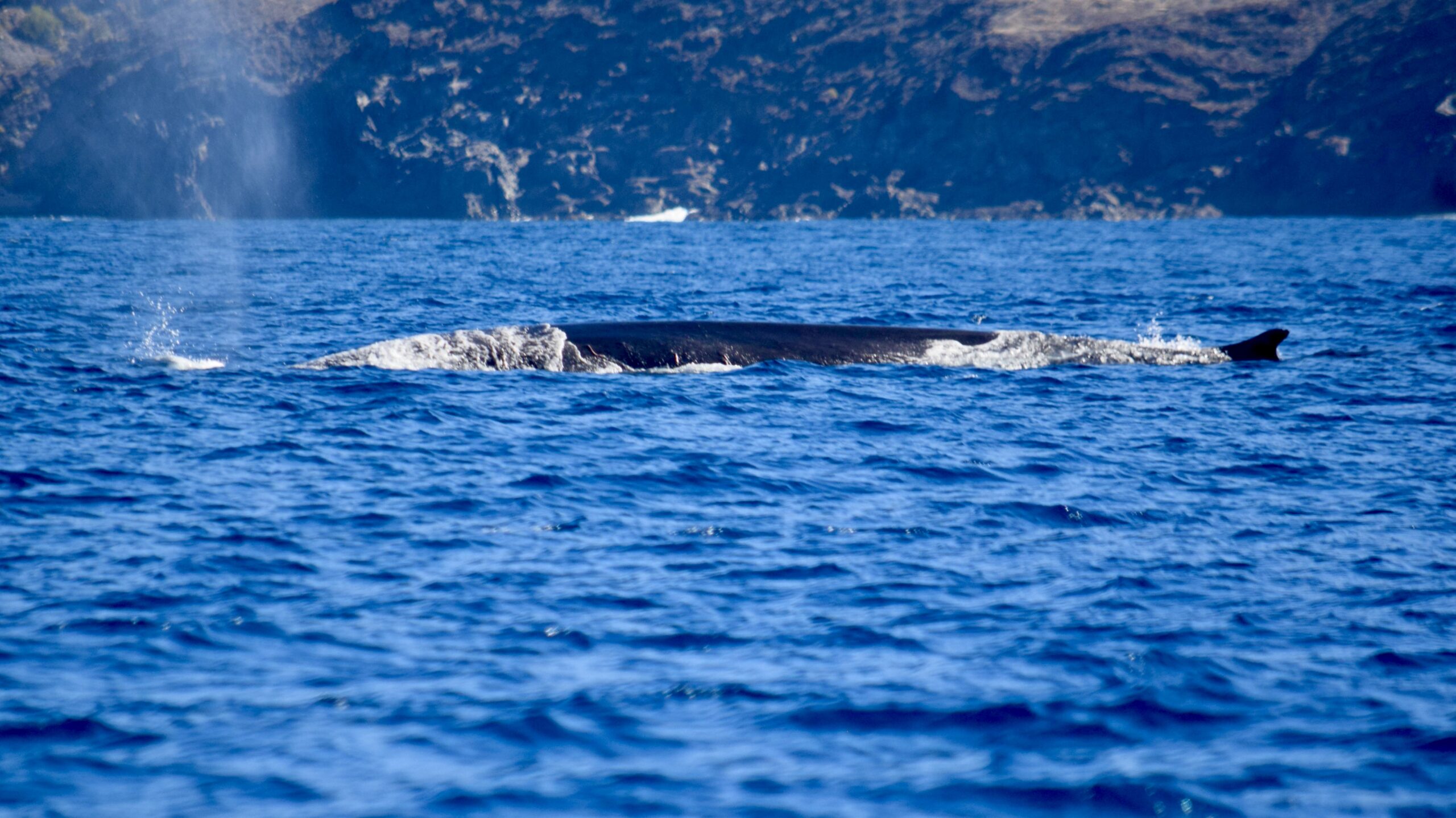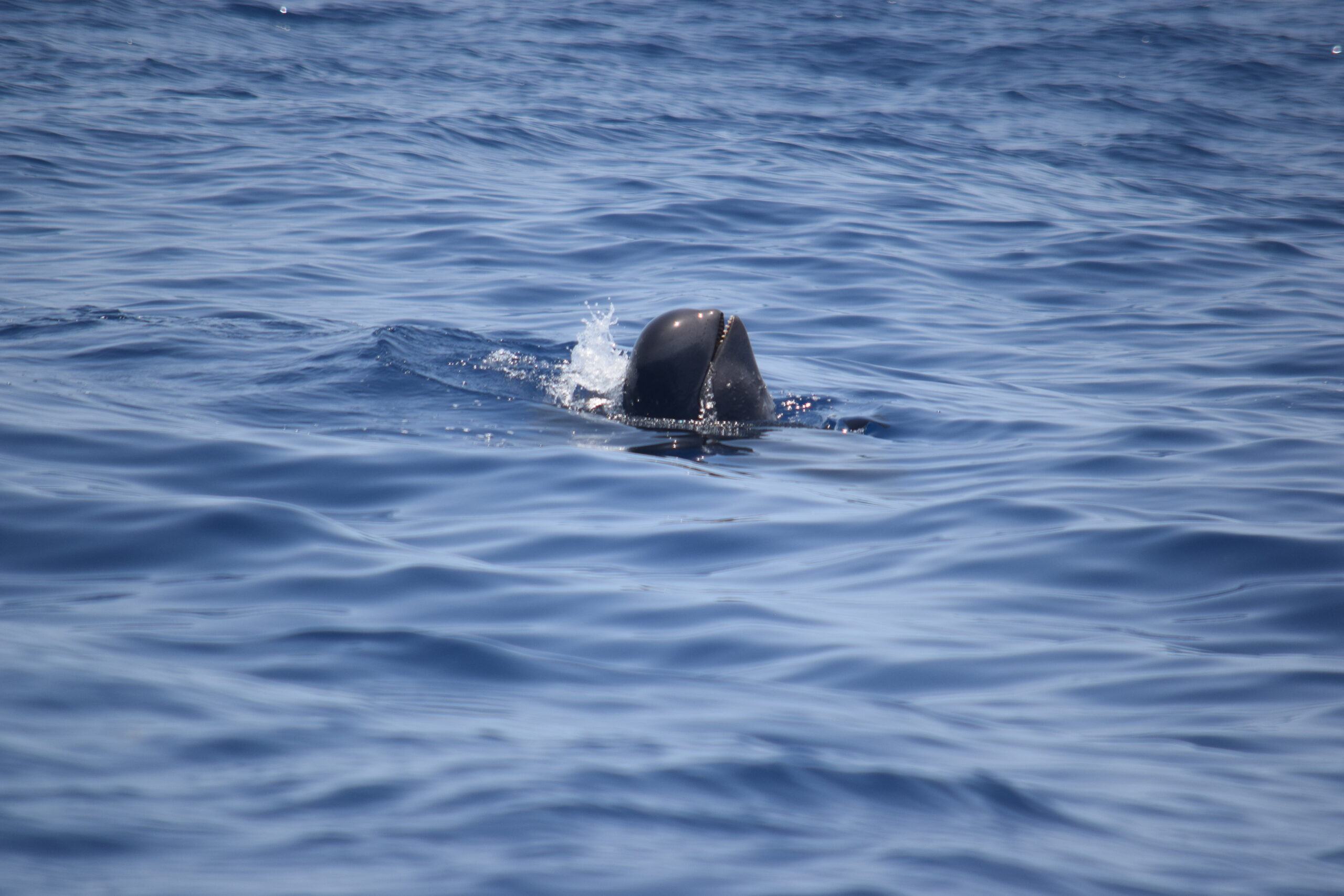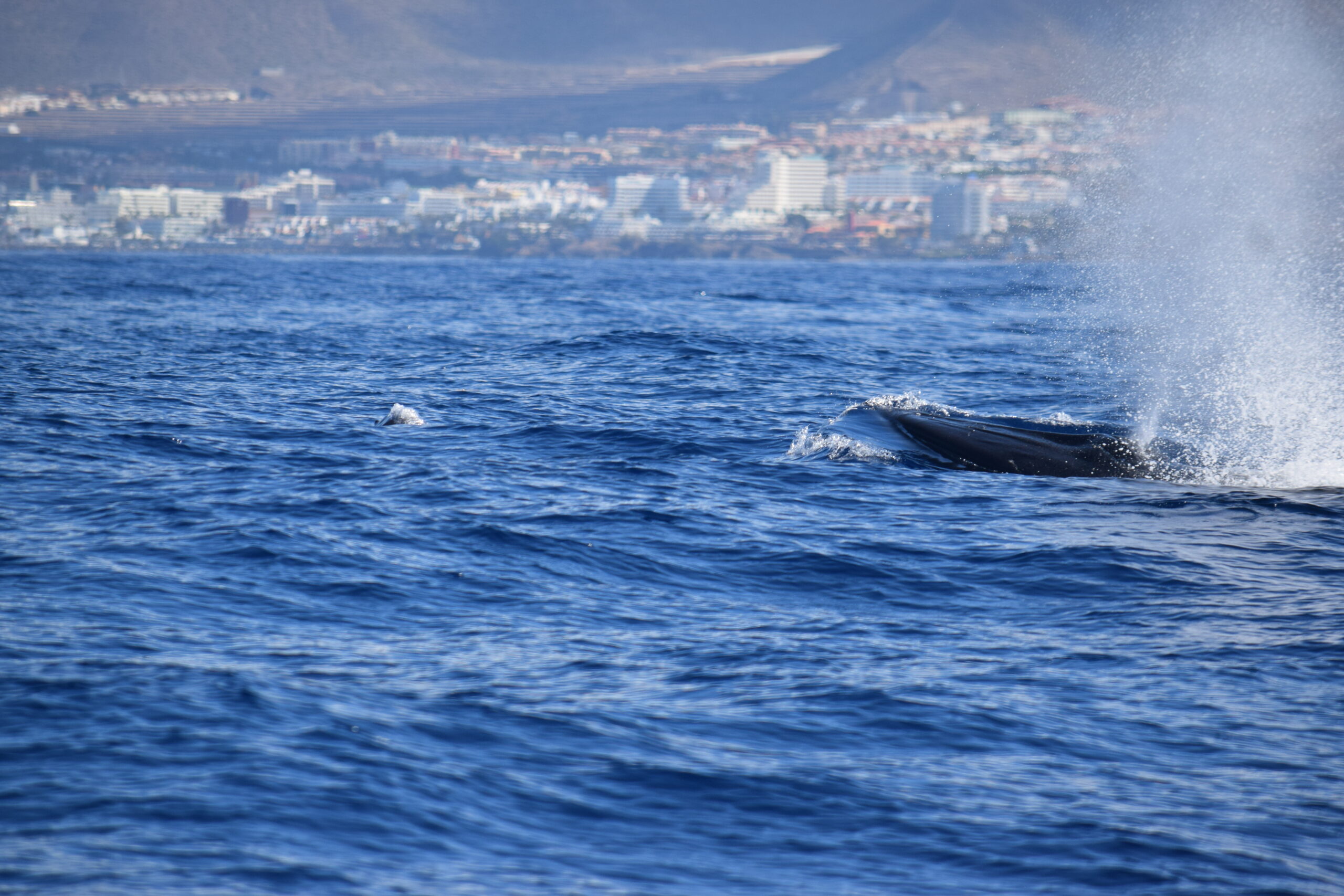When we think about how whales perceive the world, we usually talk about their echolocation or their exceptional hearing. But… can they smell? Do they use their noses like land mammals do? The answer is more complex than it seems.
Baleen whales, such as humpbacks, blue whales, and fin whales, retain parts of the olfactory system. Although not as developed as in terrestrial animals, there is evidence that they can detect certain chemical compounds. One key example is dimethyl sulfide (DMS), a substance released when krill feed on phytoplankton. High concentrations of this compound indicate areas rich in food, which may help guide these whales toward their prey.
So, although they may not “smell” the way we do, it appears that they do use chemical signals to orient themselves and find food.

On the other hand, toothed whales, such as dolphins, sperm whales, and the short-finned pilot whales we observe in Tenerife, have followed a different evolutionary path. Their nasal passages have adapted for echolocation, an acoustic tool for navigation and hunting. As a result, they’ve lost almost all of their sense of smell.
Even so, some scientists believe they may still detect chemical substances through other pathways, a phenomenon known as quasi-olfaction, although it’s still under investigation.
So… can whales smell?
In short: some, to a certain extent. Baleen whales may use chemical cues to locate food. Toothed whales, on the other hand, rely almost entirely on sound.
Come experience it with Whale Watch Tenerife
At Whale Watch Tenerife, we head out every day to observe resident dolphins and pilot whales. They may not use their sense of smell like we do — but you’ll get to see how they communicate, navigate, and interact in the wild!
Hop on board and discover how these ocean giants sense and experience the world.
Book your spot now at whalewatchtenerife.org

 Booking
Booking








